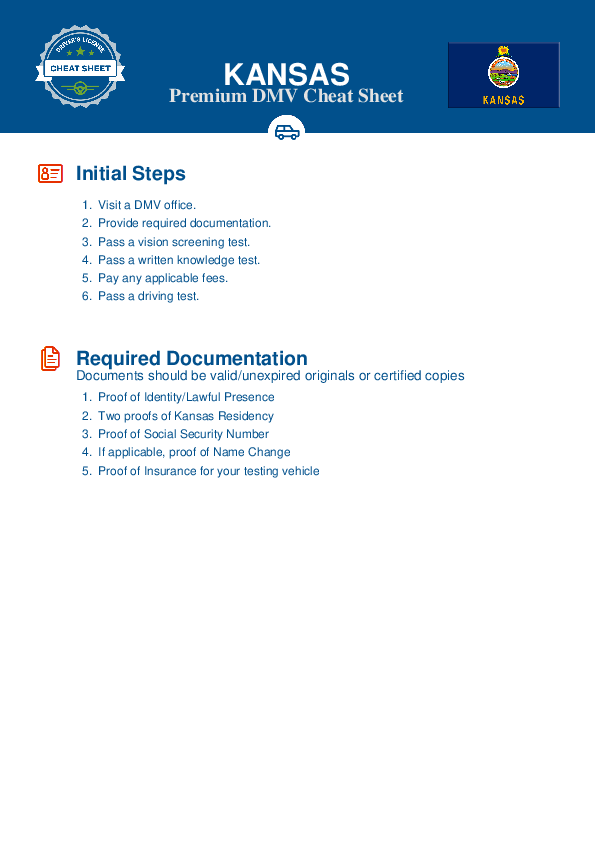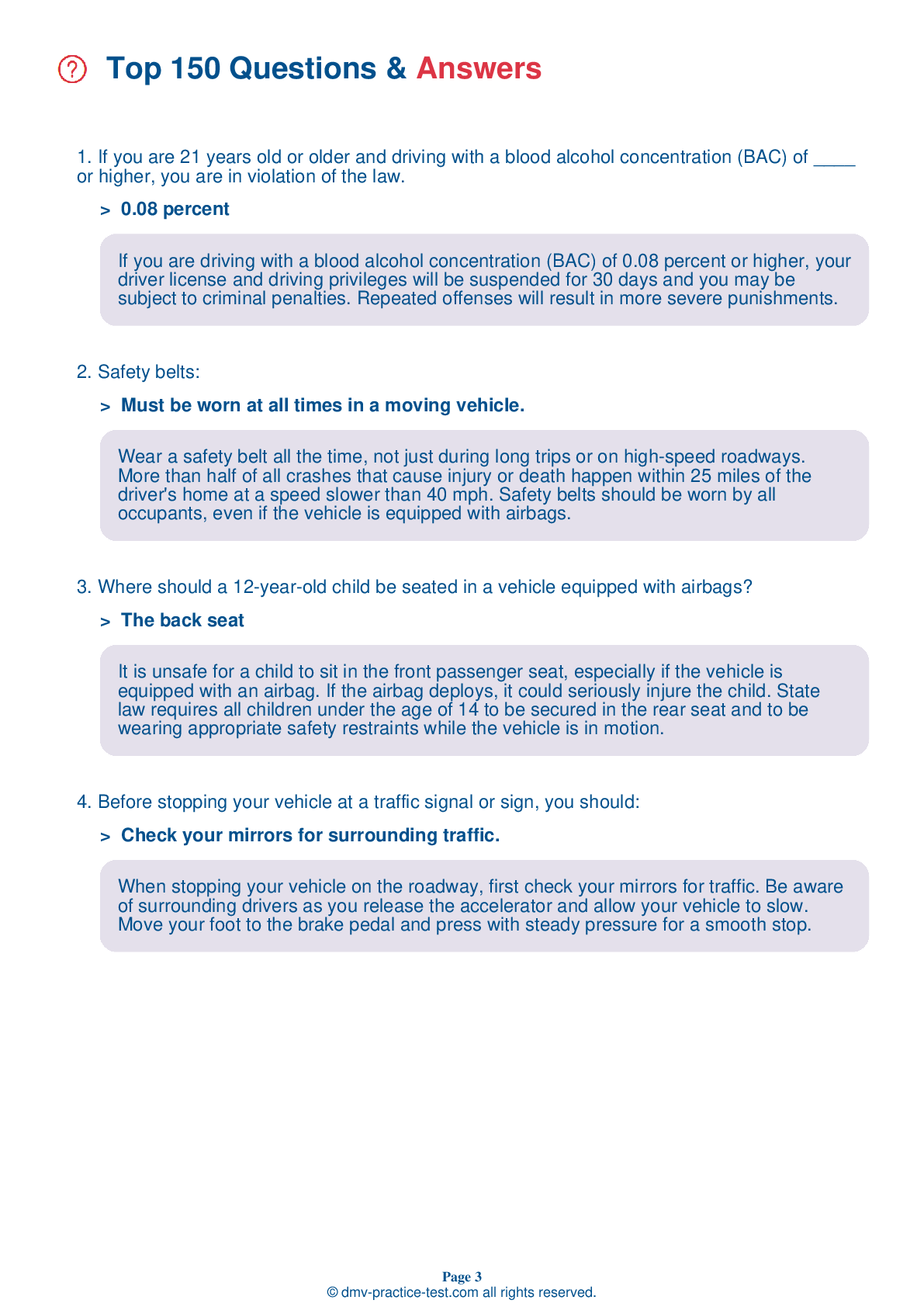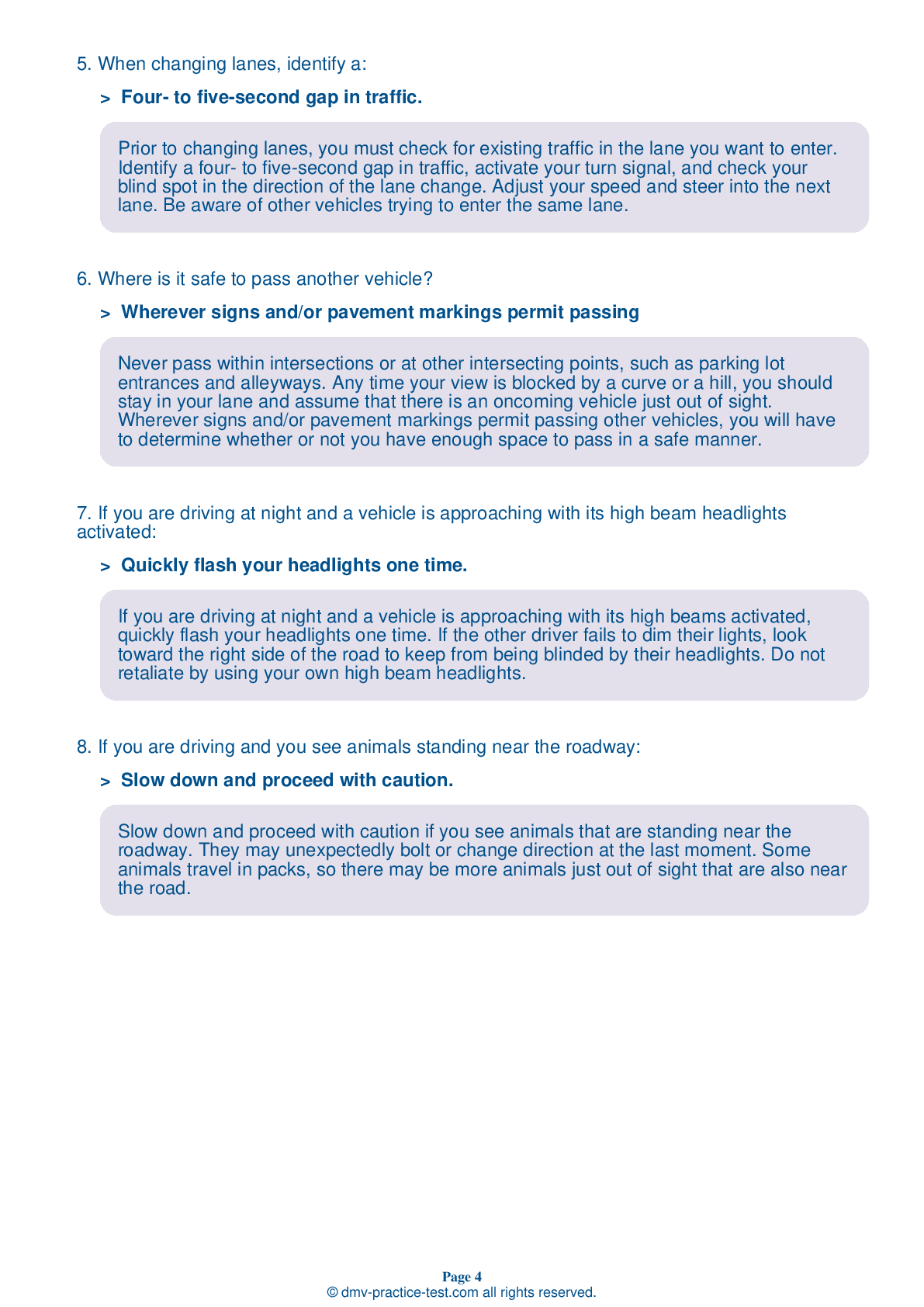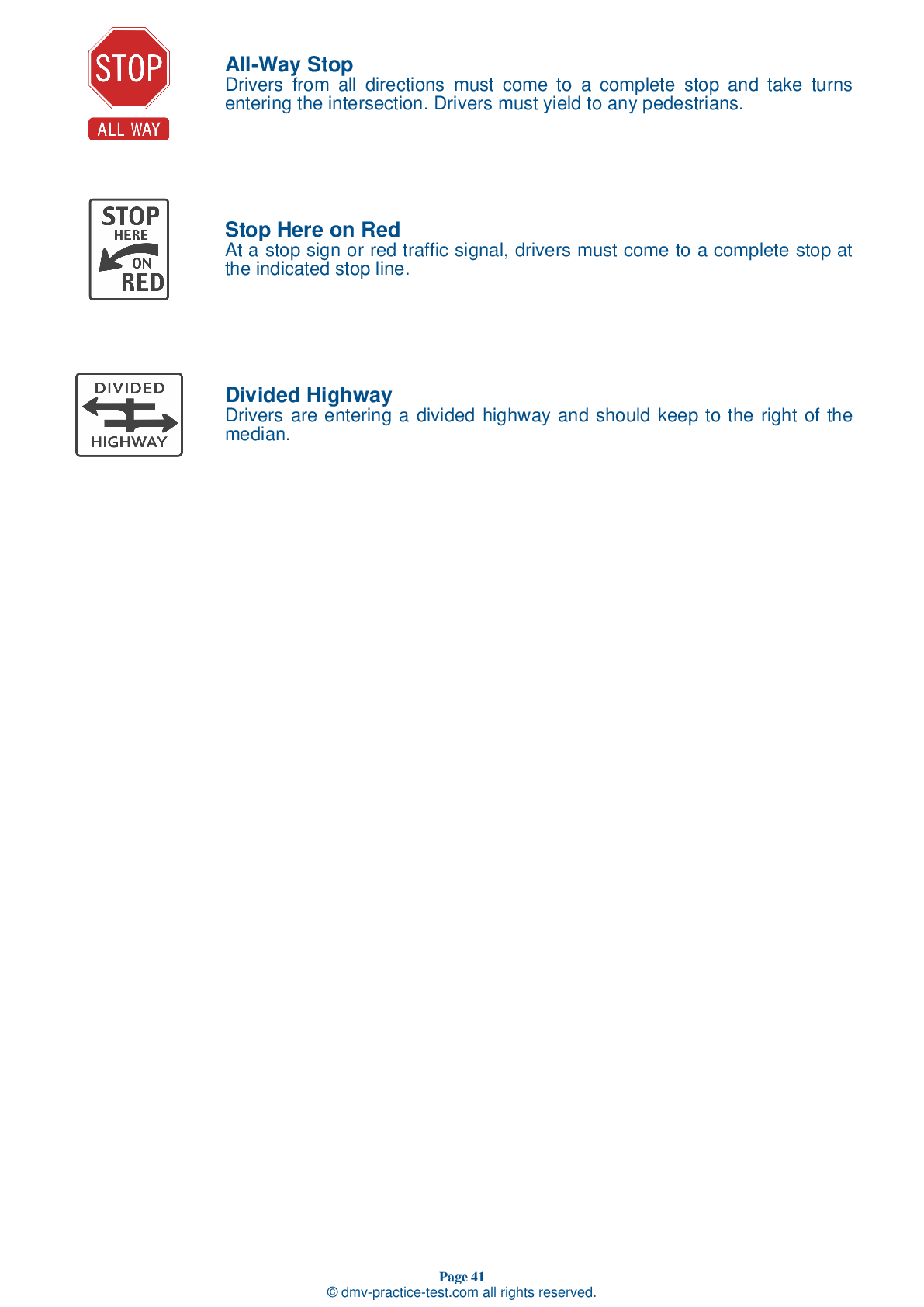FREE Kansas DMV Practice Test #8 Page 3 of 3
In Kansas, the DMV practise tests have been revised for January 2025. It includes questions based on the Kansas Driver Handbook's most essential traffic signals and regulations for 2025. Use actual questions that are very similar (often identical!) to the DMV driving permit test and driver's licence exam to study for the DMV driving permit test and driver's licence exam.
On the practise exam, each question gets a tip and explanation to help you remember the concepts. The written component of the official Kansas DMV test will include questions about traffic rules, traffic signs, and driving statutes, as well as information from the Driver Handbook.
To obtain a passing grade, you must correctly answer 20 of the 25 questions. Take our DMV practise exam to help you prepare for your Kansas instruction permit or driver's licence.
The DMV exam is available in several languages.
Using any kind of testing assistance will result in an automatic fail, and the DMV may take additional action against your driver's licence, so stay away from it.
17 . Water on the road can cause a vehicle to hydroplane. Your car may hydroplane at speeds as low as:
Hydroplaning occurs when there is standing water on a roadway. At speeds up to 35 mph, most tires will channel water away from the tire. As your speed increases past 35 mph, tires cannot channel the water as well and your tires may start to lose contact with the road and ride over the water like a set of water skis.
18 . Roads are slippery after it first starts to rain. When the road is slippery, you should:
A wet, slippery road does not allow your tires the traction they need, so it is necessary to drive more slowly on a wet road than you would on a dry road. To reduce the risk of skidding, you should avoid fast turns or stops.
19 . You have stopped for a train at a railroad crossing. After the train passes, you should:
Even after a train passes, watch out for a second train approaching on any track. Do not proceed until all gates have been lifted and all warning signals have stopped flashing.
20 . You should allow an extra cushion of space:
Drivers of trucks, buses, vans, or any vehicles pulling campers or trailers may not be able to see you if you are driving directly behind them. Increase your following distance when driving behind one of these vehicles. Additionally, large vehicles can block your view of the road, so increase your following distance to look around the sides of the vehicle and see the road ahead.
21 . Vehicles stopped behind a school bus with its red lights flashing must remain stopped until:
When a school bus is flashing its red lights and has its stop arm extended, motorists must come to a full stop until the lights are turned off, the stop arm is withdrawn, and the bus begins moving again.
22 . It is unlawful to:
It is illegal to cross the centerline to pass when driving on hills, in curves, and in other locations where you cannot see ahead far enough to pass safely. You may not pass at street crossings, at railroad crossings, where signs indicate no passing zones, or where a solid yellow line is next to your lane. You may not pass when the vehicle in front of you has stopped for a pedestrian or when driving in work zones where passing would be hazardous.
23 . You may legally block an intersection:
Even if the light is green, you may not enter an intersection unless you can get completely across before the light turns red. If you block the intersection, you can be cited.
24 . Children on bicycles should be given extra space by motor vehicle operators because:
Children are often the least predictable pedestrians and the most difficult pedestrians to see. Take extra care to look out for children, especially near schools, bus stops, playgrounds, parks, and ice cream trucks. Be aware of children riding bikes on the sidewalk, as they may come onto the road unexpectedly.
25 . You want to park downhill on a two-way road and there is no curb. Which way do you turn your front wheels?
When parking facing downhill on a road with or without a curb, or when facing uphill on a road without a curb, turn your front wheels toward the edge of the road so your vehicle will roll away from traffic if the brakes fail. However, when parking uphill on a road with a curb, turn your wheels toward the center of the road so the vehicle will roll into the curb if the brakes fail.
Need Car Insurance? No problem!
Compare the best rates in Kansas and find a personalized policy that meets your needs.
1. Are You Currently insured ?
2. Married ?
3. Do you own your Home?
4. Do you have more than 1 car ?
5. Have you or a Family Member Honorably Served in U.S. Military ?
6. Your Name
7. Age
8. Zip code
IMPORTANT REMINDER:Auto Insurance is Mandatory to drive in Kansas. Get covered before you hit the road to avoid any fines.
Ranked by best match



